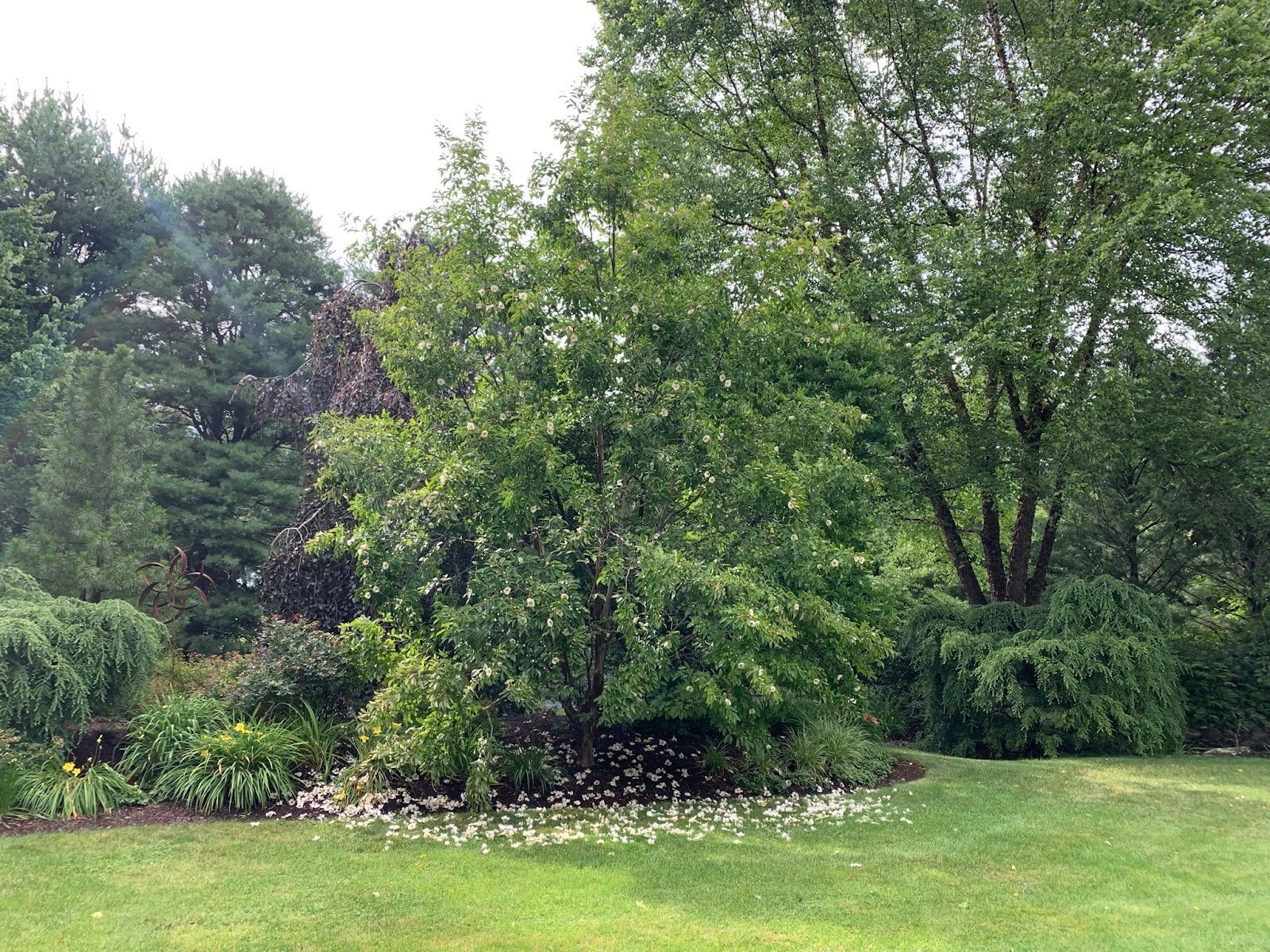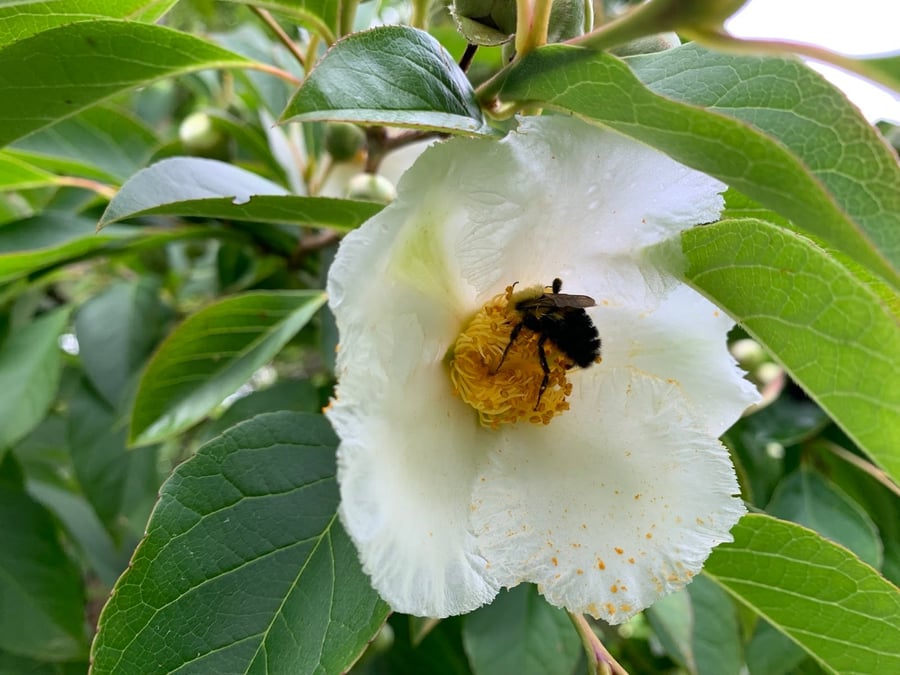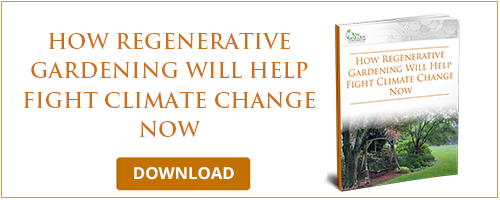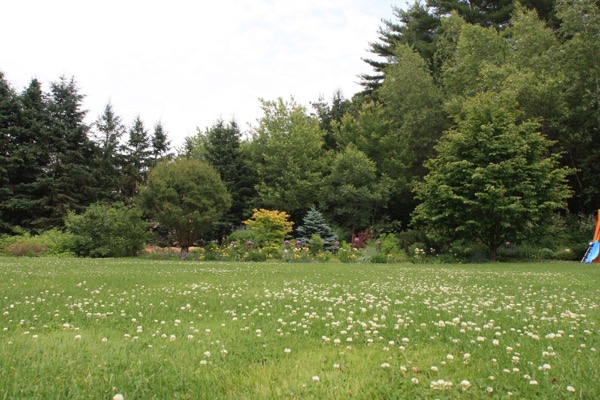It seems that every week there’s news directly related to climate change: historic heat in the West; 100-year floods on the Gulf Coast; earlier, more damaging hurricanes affecting the East Coast. And perhaps the most fundamental contributor to this climate chaos is increased carbon dioxide emissions.
Fortunately, there is a powerful weapon available to help combat climate change – reforestation. That’s a fancy name for the simple act of planting trees. Trees are a keystone species in the battle to reduce harmful atmospheric carbon dioxide. Trees are responsible for significant carbon sequestration – the safe storage of carbon dioxide -- and for increased environmental stability.
 Stewartia pseudocamellia loaded down with flowers and standing proudly as a focal understory tree at MaraBenn.
Stewartia pseudocamellia loaded down with flowers and standing proudly as a focal understory tree at MaraBenn.
An international research team that was part of the NASA global climate change initiative published a recent study in the journal Science estimating the global potential of restoring forested lands as a possible strategy for mitigating climate change. They determined that planting more than half a trillion trees worldwide could reduce atmospheric carbon dioxide by approximately 25 percent – enough to negate 20 years of human-generated carbon emissions at the current rate.
“That’s a lot of trees,” you’re thinking. “Can it really make a difference if I plant a couple in my yard?”
The short answer is “yes.” According to the USDA’s Arbor Day Foundation, a single mature tree can pull 48 pounds of carbon dioxide out of the atmosphere in one year while releasing much-needed oxygen in exchange. So every tree planted means more carbon dioxide is removed and less harm is done to the environment. Just imagine if everyone in your neighborhood planted just one tree.

TWEETABLE TIP
According to the USDA’s Arbor Day Foundation, a single mature tree can pull 48 pounds of carbon dioxide out of the atmosphere in one year while releasing much-needed oxygen in exchange.
VIA @GardenContinuum

And the benefits of planting a tree don’t stop there. Trees provide a number of other benefits, including helping manage stormwater and limiting erosion. Their root systems help stabilize and support the soil while their canopies provide shade and help keep our homes and yards cooler. Trees also provide food and shelter for birds and other wildlife, including the important pollinators who fertilize and help increase the numbers of other beneficial plants.
Being a good steward of the trees
As a homeowner you have a responsibility to maintain your home and the landscape it sits on, and that includes the trees that grow there. Unfortunately, some homeowners don’t really “see” their trees. They often simply provide a green backdrop and only attract attention when they shed their leaves in the fall, causing many to grumble about all the raking and leaf-blowing that entails.
Mature trees can be even more difficult for owners to notice because everything happens up in the canopy, which is sometimes 25 or even 50 feet up in the air, requiring much craning of necks to see and inspect. But those big canopies are what adds great value to your trees and it’s important to carefully maintain them – not just hack away at limbs that may be hanging over the house or a neighbor’s property. Or worse, just chopping them down without much consideration.
Being a good steward of the trees means learning a little bit about them, understanding such things as:
-
Sunlight Exposure: how much do they need to be happy and healthy?
-
Water Consumption: as my trees get bigger, will they be able to get the water they need?
-
Height & Width: how tall and wide will my trees get? Are my trees a good distance from any boundary lines and is there room for them to grow without causing problems down the road?
-
Maintenance: do my trees need a lot of regular maintenance such as trimming and pruning?
-
Benefits: what value do my trees provide and how do they help my property and the environment? What animals do they support?
 A bumblebee is enjoying the abundant flowering of the Stewartia. Each flower loaded with pollen for the taking.
A bumblebee is enjoying the abundant flowering of the Stewartia. Each flower loaded with pollen for the taking.
Planting a tree to help the environment goes beyond simply sticking one in a hole in the ground. You should be mindful of the resources required to successfully select, transport, plant, nurture, and maintain that tree. Is your soil capable of supporting a full-grown tree or do you need to improve its quality so that it requires minimal use of fertilizers and other chemicals?
Remember that not all trees will grow equally well in your landscape. It’s important to pick compatible trees that will thrive in your location, not because you happen to like how they look. Work with your local landscape professional, arborist, or garden center to select the right tree and place it in the right location to maximize its chance for success, enabling it to grow and mature with minimal disruption or extra work.
Even if you have a small yard, you still have options for planting a tree. Small spaces require a level of restraint and a little extra planning, but the result can be extra-rewarding – it can provide beauty, a sense of roominess, and a source for relaxation in an otherwise relatively tight area. Once again, consider working with an expert on tree selection and planting to help you make the most of your space and options.
Trees are an astonishing yet under-appreciated resource and a key tool for tackling climate change. Scientists still have much to learn about trees and the complex role they play in nature. But one thing’s for sure – the world can use all the trees that we can plant.

TWEETABLE TIP
Planting a tree to help the environment goes beyond simply sticking one in a hole in the ground. You should be mindful of the resources required to successfully select, transport, plant, nurture, and maintain that tree.
VIA @GardenContinuum

If you are interested in regenerative gardening, please download our eBook about it called How Regenerative Gardening will help Fight Climate Change.

If you are in our service area around Medfield, MA, consider scheduling a Landscape Discovery Session to talk about your landscape needs.










Leave a comment